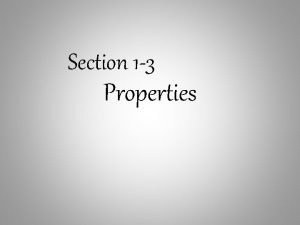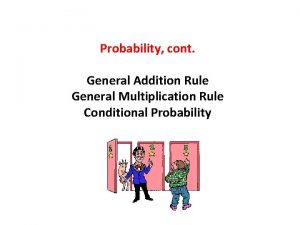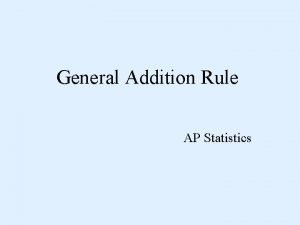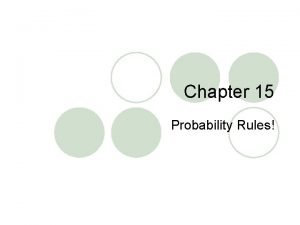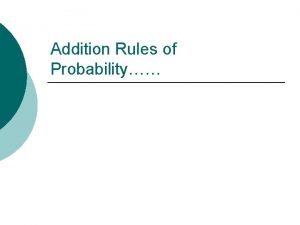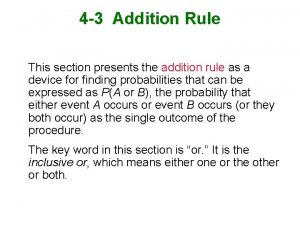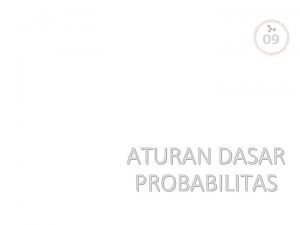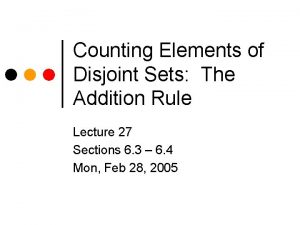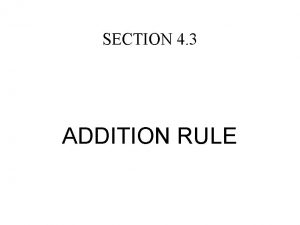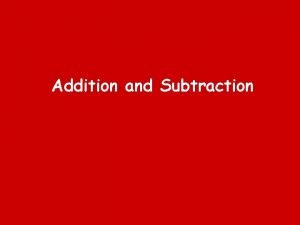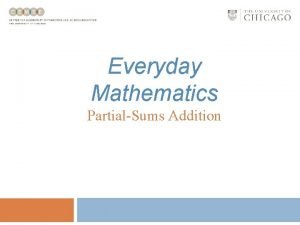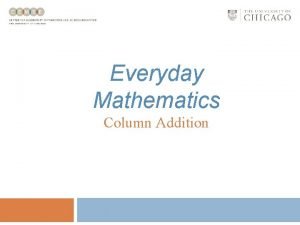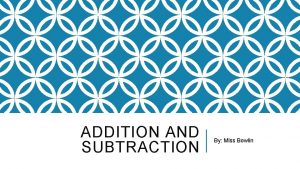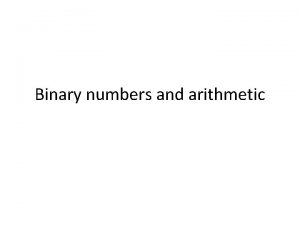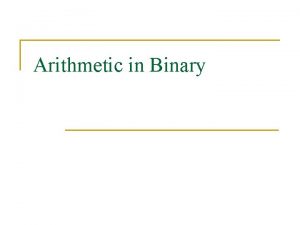4 3 Addition Rule This section presents the









- Slides: 9

4 -3 Addition Rule This section presents the addition rule as a device for finding probabilities that can be expressed as P(A or B), the probability that either event A occurs or event B occurs (or they both occur) as the single outcome of the procedure. The key word in this section is “or. ” It is the inclusive or, which means either one or the other or both.

Compound Event any event combining 2 or more simple events Notation P(A or B) = P(in a single trial, event A occurs or event B occurs or they both occur)

General Rule for a Compound Event When finding the probability that event A occurs or event B occurs, find the total number of ways A can occur and the number of ways B can occur, but find that total in such a way that no outcome is counted more than once.

Compound Event Formal Addition Rule P(A or B) = P(A) + P(B) – P(A and B) where P(A and B) denotes the probability that A and B both occur at the same time as an outcome in a trial of a procedure.

Compound Event Intuitive Addition Rule To find P(A or B), find the sum of the number of ways event A can occur and the number of ways event B can occur, adding in such a way that every outcome is counted only once. P(A or B) is equal to that sum, divided by the total number of outcomes in the sample space.

Disjoint or Mutually Exclusive Events A and B are disjoint (or mutually exclusive) if they cannot occur at the same time. (That is, disjoint events do not overlap. ) Venn Diagram for Events That Are Not Disjoint Venn Diagram for Disjoint Events

Complementary Events A and must be disjoint. It is impossible for an event and its complement to occur at the same time.

Rule of Complementary Events

Venn Diagram for the Complement of Event A

